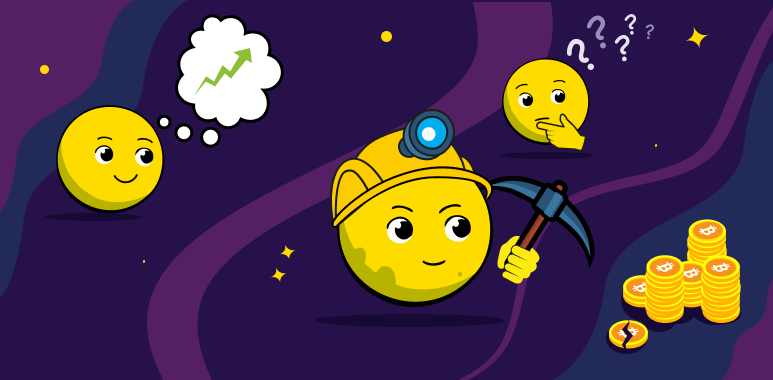
Bitcoin halving countdown
What is halving?
Bitcoin has a fixed supply of 21 million coins. As of 2025, approximately 19.84 million bitcoins have been mined, accounting for about 94% of the total supply.
Bitcoin halving is the process of reducing the block reward given to miners by half, which slows the creation of new BTC and introduces controlled deflation.
This mechanism ensures predictability and transparency in Bitcoin’s issuance schedule, making it more reliable as a financial asset — investors know exactly when supply growth will decrease.
Halving also boosts Bitcoin’s scarcity, reinforcing its intrinsic value. This feature, inspired by the limited supply of commodities like gold, was built into the protocol by Satoshi Nakamoto to mimic natural resource economics and support long-term value preservation.

Current block height

Blocks until halving

BTC day price
How does Bitcoin halving work?
Satoshi Nakamoto designed Bitcoin’s issuance, capping total supply at 21 million coins, unlike fiat currencies which can be printed indefinitely.
When Bitcoin launched in 2009, miners earned 50 BTC per block. However, the protocol was designed to halve the block reward every 210,000 blocks — roughly every four years — to control supply.
As a result:
- In 2012, the reward dropped to 25 BTC
- In 2016, to 12.5 BTC
- In 2020, to 6.25 BTC
- And in 2024, to 3.125 BTC
This halving cycle will continue until around 2140, when the reward will fall below one satoshi (0.00000001 BTC), Bitcoin’s smallest unit. By then, all 21 million BTC will have been mined, and miners will earn income solely from transaction fees
| Halving | Est. date | Block height | Block reward (BTC) |
|---|---|---|---|
| 0 | - | 0 | 50 |
| 1 | 11.28.2012 | 210,000 | 25 |
| 2 | 07.09.2016 | 420,000 | 12.5 |
| 3 | 05.11.2020 | 630,000 | 6.25 |
| 4 | 20.04.2024 | 840,000 | 3.125 |
| 5 | 29.08.2028 | 1,050,000 | 1.5625 |
Bitcoin halving dates
To date, there have been four Bitcoin halving events: in 2012, 2016, and 2020, and most recently, on April 20, 2024. All these events have had a significant impact on the price of Bitcoin. Let us take a closer look at each event.
Bitcoin halving 2012
Nov 2012 50 → 25 BTC ~$12 ~$1,000 (+8,200%)
Bitcoin halving 2016
July 2016 25 → 12.5 BTC ~$650 ~$19,800 (+2950%)
Bitcoin halving 2020
May 2020 12.5 → 6.25 BTC ~$8,500 ~$69,000 (+690%)
Bitcoin halving 2024
April 2024 6.25 BTC→ 3.125 BTC ~$28,500 – not counted yet
The last halving happened on April 19-20, 2024, when the reward for miners fell to 3.125 BTC. Bitcoin price changes after halving historically do not happen immediately, the value of the asset changes within 12-18 months and this period has not yet expired, so we continue to monitor the changes.
Historical data suggest that past halving events have often led to significant price spikes, but Arthur Hayes, CEO of BitMex, warns that while medium-term price increases may occur, the immediate price action before and after the halving could be negative due to entrenched market expectations.
How does Bitcoin halving affect its price?
The reason for excitement around the halving event is its potential economic impact, historical patterns of price changes following previous halving events, and the way it influences miners and the cryptocurrency market:
- Bitcoin economic model: Halving is an integral part of the BTC economic model. The lower the supply of BTCs, – the higher they are priced.
- History of impact on BTC price: Past BTC halving events have been accompanied by increased coin volatility over the next 1-1.5 years: the asset’s price can rise by 2000% plus, – as it was in 2016. However, the value of Bitcoin is influenced by many other factors, and its past performance does not guarantee future results.
- Impact on miners' income: Most miners' income comes from rewards distribution for a found block of Bitcoin. Each halving cuts this reward in half, reducing profits unless offset by rising BTC prices or fees.
When is the next Bitcoin halving?
The fourth halving of Bitcoin took place in April 2024 and now we are waiting for the next Bitcoin halving in 2028.
Predicting the exact date of the next halving is difficult because it depends on block size, but you can rely on SwapSpace Halving Countdown. Why is our timer different from the others? It is based not on the average block mining time, which is commonly cited as 10 minutes, but on live blockchain statistics. This timer may alternate, but still, it is the most precise halving countdown.
From our blog

Bitcoin Halving 2024 Predictions: What's On Everybody's Minds in 2023?
Read more ❯
What is halving?
Read more ❯Curious for more?
Join our newsletter — stay informed, stay empowered.
